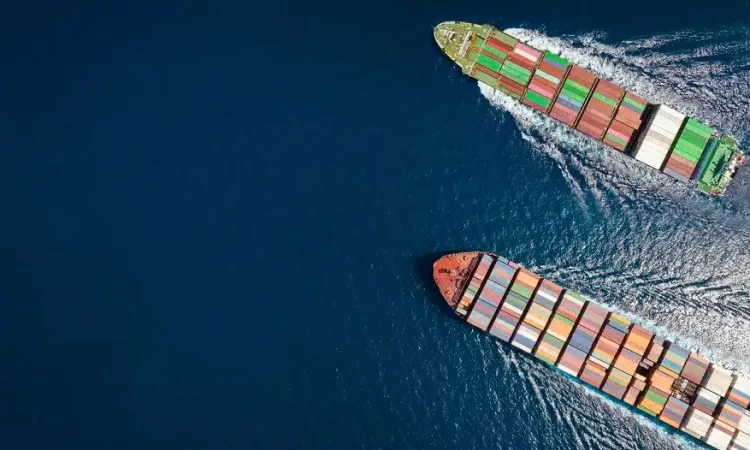
Have you ever stopped to think about how many dangerous goods are shipped around the world every day? We’re talking about flammable chemicals, explosive materials, and even radioactive items, all of which are essential for industries like healthcare, energy, and manufacturing.
But here’s the catch: shipping these goods isn’t without its risks. We’ve seen accidents, explosions, and environmental disasters caused by mistakes or mishandling. So why do we keep doing it? Is it because we have no choice, or are we cutting corners in ways we shouldn’t be?
Dangerous Goods: The Backbone of Global Trade
First, let’s get one thing straight: dangerous goods aren’t just “dangerous”—they’re also incredibly important. Imagine a world without lithium-ion batteries for your phone or electric car, or without the medical oxygen used in hospitals. It’s hard, right?
Dangerous goods make global trade tick. They power industries, enable innovation, and, in many cases, save lives. For example:
- Lithium-ion batteries are crucial for consumer electronics and renewable energy solutions.
- Compressed gases, like oxygen and nitrogen, are used in medical treatments and industrial processes.
- Flammable chemicals fuel our cars, planes, and ships.
Without these goods, entire industries would grind to a halt. So, while the risks are real, the need for dangerous goods is even greater.
The Risks We’re Taking Every Day
Here’s where things get tricky. Shipping dangerous goods is like walking a tightrope, it requires balance, precision, and careful planning. When things go wrong, the consequences can be severe.
Let’s break down some of the biggest risks:
- Improper Packaging. Ever heard the phrase “It’s what’s on the inside that counts”? Not when it comes to shipping! What’s on the outside, like UN-certified boxes and labels, is just as important. Skipping proper packaging can lead to leaks, spills, or worse.
- Human Error. We all make mistakes, but when it comes to dangerous goods, a small error can have massive consequences. Think of mislabelled cargo or incorrect paperwork.
- Environmental Impact. A chemical spill in the wrong place can destroy ecosystems, harm wildlife, and cost millions to clean up.
So, Why Do We Still Take These Risks?
If shipping dg goods is so risky, why do we keep doing it? The answer isn’t black and white, but a mix of practical realities and, frankly, a few bad habits:
- We Can’t Live Without Them. Dangerous goods are essential to the modern world. Whether it’s powering homes or treating patients, the benefits often outweigh the risks.
- Speed Over Safety. In a world that demands next-day delivery, some companies prioritise speed and cost savings over proper safety measures. Cutting corners might save time, but it’s a gamble that can backfire.
- Knowledge Gaps. Not everyone handling dangerous goods has the proper training. Lack of awareness about regulations or best practices is a huge problem.
- Inconsistent Rules. Shipping rules vary across countries, making it harder to ensure consistent safety standards. One country’s “okay” might be another’s “absolutely not.”
How Do We Make Dangerous Goods Shipping Safer?
Now, let’s talk solutions. While we can’t eliminate all risks, there are plenty of ways to make shipping dangerous goods much safer:
- Invest in Proper Packaging. Use UN-certified boxes and labels that clearly identify what’s inside. Proper packaging reduces the chance of leaks and accidents.
- Train the Right People. Everyone involved in shipping dangerous goods, from the packers to the drivers, needs proper training. The more they know, the safer the process.
- Leverage Technology. Tracking systems can monitor shipments in real time, detecting problems like temperature spikes or potential leaks before they become disasters.
- Tighten Regulations. International cooperation is key. Stricter rules and consistent enforcement can close gaps and ensure everyone plays by the same rules.
It’s not rocket science, these are practical steps that can make a big difference. The challenge is getting everyone on board.
Conclusion
Here’s the bottom line: shipping dangerous goods will always come with risks, but those risks are manageable if we prioritise safety over shortcuts. The world depends on these goods, but that doesn’t mean we should accept preventable accidents as part of the deal.
With better training, smarter regulations, and a commitment to doing things the right way, we can continue to ship dangerous goods without putting lives and the environment in unnecessary danger.
The next time you charge your phone or fuel your car, take a moment to appreciate the journey those goods took and the people working behind the scenes to make it safer every day.




